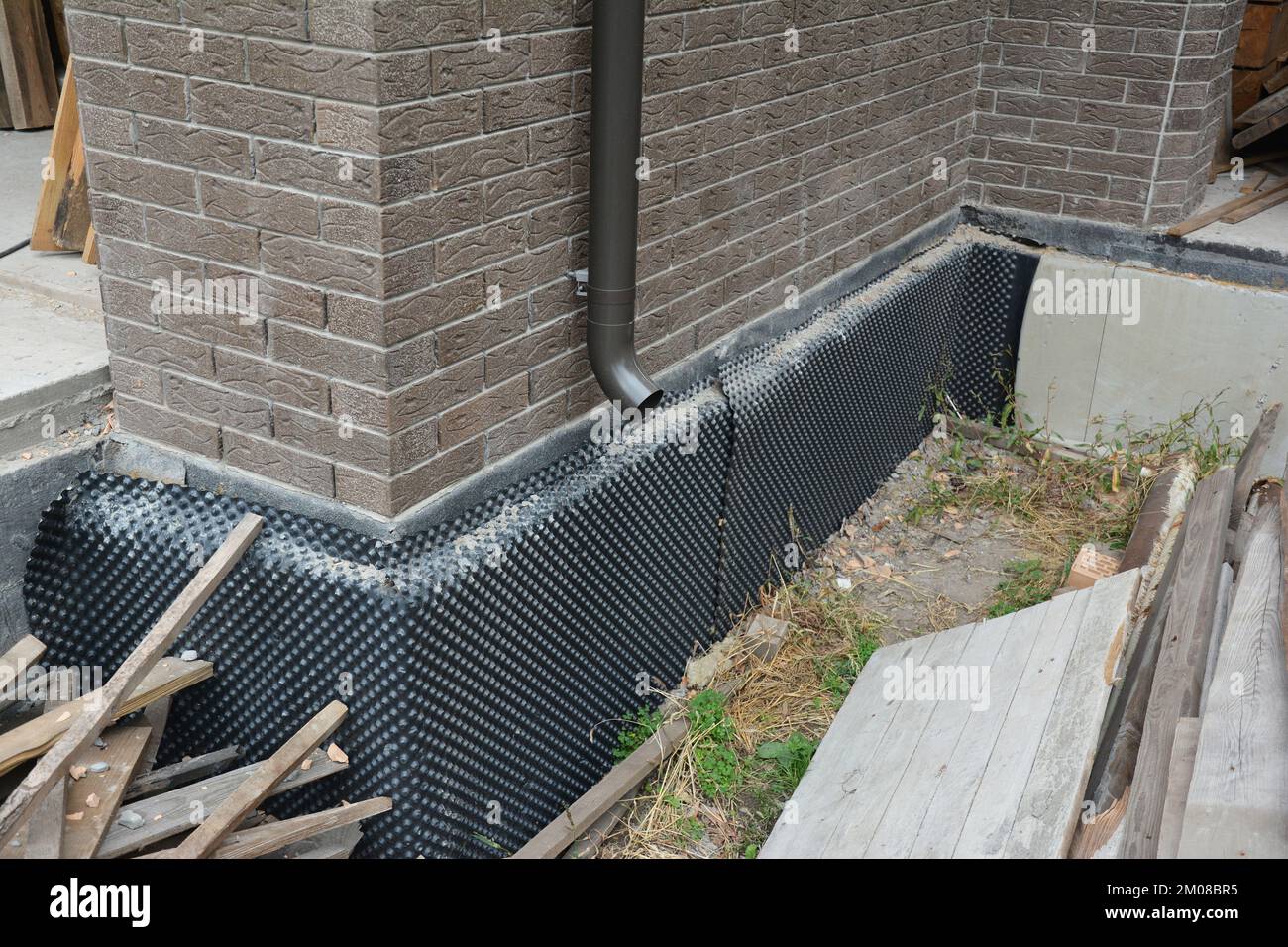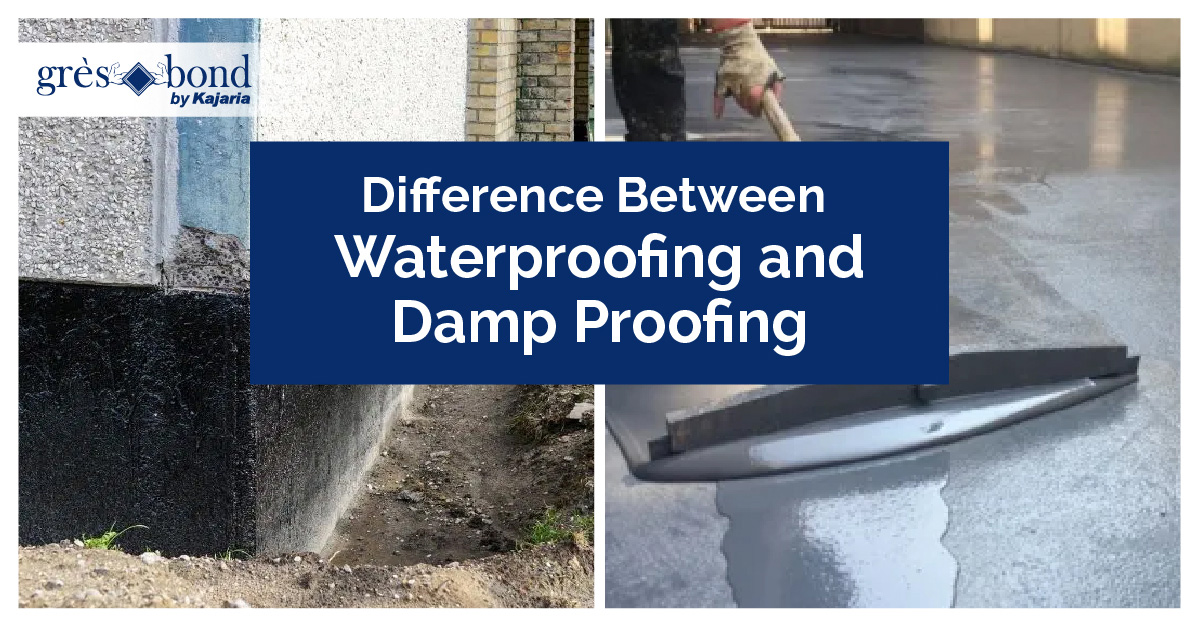Property manager's handbook to damp proofing newcastle solutions
Property manager's handbook to damp proofing newcastle solutions
Blog Article
Exploring the Different Strategies and Solutions for Effective Damp Proofing
Dampness in buildings postures significant difficulties to both architectural integrity and indoor air top quality. Different techniques and services have actually arised to battle this prevalent issue. From conventional damp-proof membranes to ingenious chemical treatments, each technique uses unique advantages. Understanding these options is crucial for reliable dampness control. Choosing the right solution depends on specific structure problems and requirements, triggering additional exploration into the most effective wet proofing approaches readily available.
Understanding the Reasons For Moisture
Although moisture can occur from various sources, understanding these reasons is vital for effective removal. Frequently, moisture originates from 3 key resources: rising wet, permeating damp, and condensation. Increasing wet happens when groundwater travels up-wards with porous materials, such as brick or stone, commonly as a result of a lack of an effective barrier (mould treatment newcastle). Permeating wet is generally triggered by external variables, including roofing system leakages, defective seamless gutters, or damaged walls, allowing water to penetrate a home. Condensation, on the various other hand, results from excess moisture in the air, usually worsened by inadequate ventilation and temperature level distinctions, resulting in water droplets basing on surfaces. Determining these underlying concerns is important, as each kind of wetness requires a customized approach for remediation. Correct assessment assists in identifying the most reliable remedies, inevitably securing the architectural honesty of a structure and improving indoor air top quality
Traditional Damp-Proof Membranes

Chemical Damp-Proofing Solutions
Chemical damp-proofing remedies offer an innovative strategy to stop moisture invasion in structures. These techniques commonly include the application of fluid chemicals that penetrate stonework and form a barrier versus rising moist. Typically made use of chemicals include silanes, siloxanes, and other water-repellent representatives that respond with surface products to develop a hydrophobic layer.The application process normally calls for drilling holes right into the wall surfaces, injecting the chemical option, and enabling it to heal. This technique is specifically advantageous for older structures where standard damp-proof membrane layers may be not practical. In addition, chemical damp-proofing can be less turbulent and extra affordable than considerable renovation projects.While efficient, these remedies depend on appropriate application and ecological conditions for peak performance. Regular maintenance and surveillance are important to guarantee the long life of the damp-proofing therapy. Overall, chemical damp-proofing represents a flexible choice for protecting buildings versus moisture-related damages
Cavity Wall Building Strategies
Tooth cavity wall construction techniques offer numerous benefits, particularly in dampness control and energy efficiency. By incorporating an air gap in between two layers of stonework, these wall surfaces properly alleviate water ingress while boosting insulation. This mix not only protects frameworks from moisture yet likewise contributes to reduced power intake.
Advantages of Dental Caries Wall Surfaces
When taking into consideration effective wet proofing techniques, the advantages of dental caries walls stand apart plainly. Cavity wall surfaces contain 2 different layers, creating an air space that efficiently reduces moisture infiltration. This design decreases the danger of dampness, as the external wall works as a barrier versus rain and water ingress. In addition, cavity wall surfaces boost thermal insulation, which adds to power efficiency by minimizing warmth loss. They also supply audio insulation, assisting to develop a quieter indoor atmosphere. The air gap permits for air flow, which assists in moisture control and minimizes the likelihood of mold growth. These benefits not only enhance the general comfort of a structure however likewise add to its long life and architectural stability.
Wetness Control Strategies
Reliable wetness control methods are critical in dental caries wall construction to assure long-lasting protection versus dampness. One main technique entails the consolidation of weep holes, which promote water drainage from the dental caries, stopping accumulation. Additionally, using breathable membranes can aid take care of moisture levels while enabling caught vapor to get away. Correct positioning of insulation is also essential, as it must not obstruct water drainage paths. Making certain that the outer leaves of the tooth cavity wall surface are constructed with water-resistant materials improves total sturdiness. Normal maintenance checks are vital to recognize any type of clogs or damage early, securing the framework's integrity. Eventually, a mix of these techniques develops a durable protection versus wetness breach in cavity walls.
Insulation and Energy Efficiency
Insulation plays a crucial function in boosting power performance within cavity wall building. By integrating shielding products, these wall surfaces develop a thermal obstacle that minimizes warm loss and lowers power consumption. Effective insulation not just aids keep a stable indoor temperature level however also minimizes the danger of dampness, as it avoids condensation within the wall cavity. Numerous techniques, such as the use of inflexible foam boards or mineral woollen, can be utilized to achieve optimal insulation performance. Additionally, correct setup is vital to assure that gaps and gaps are reduced, which can otherwise jeopardize energy effectiveness. Ultimately, a well-insulated cavity wall surface contributes greatly to overall sustainability and reduces heating & cooling expenses for homeowners.
Outside Damp Proofing Techniques
Exterior wet proofing techniques are vital for protecting frameworks from moisture seepage. Two efficient techniques consist of the application of waterproof membrane layers and the installation of French drains. These solutions aid reduce water build-up and preserve the integrity of buildings.
Waterproof Membrane Layer Application
While different methods exist for stopping dampness ingress, the application of water resistant membrane layers remains an extremely effective external moist proofing technique. These membranes are normally made from materials such as polyethylene, rubber, or customized asphalt, providing a durable obstacle against water penetration. The installment process entails using the membrane layer to the external surfaces of structures or wall surfaces, guaranteeing complete protection to stop leaks. Correct bond and securing at joints are vital to making best use of efficiency. Water-proof membrane layers can be used in numerous forms, including fluid coverings and sheet membrane layers, enabling for versatility based upon the details needs of the framework. This approach not just shields structures from wetness yet also improves their durability and architectural stability.
French Drain Installation
One effective method for taking care of groundwater and preventing wetness build-up around a building's foundation is the installation of a French drain. This water drainage system includes a trench full of gravel and a perforated pipe that reroutes surface water far from the structure. Appropriate setup requires mindful preparation, making sure that the drain read more inclines far from the structure to assist in suitable water circulation. Additionally, the location of the drainpipe is important; it should be positioned in locations susceptible to pooling or excess moisture. Normal upkeep, including cleaning debris from the crushed rock and ensuring the pipe stays unhampered, is essential for lasting efficiency. Eventually, a well-installed French drain can considerably reduce the threat of water-related issues in foundations and cellars.
Inside Waterproofing Approaches
Inside waterproofing approaches are essential for securing a building's interior from wetness seepage and potential water damages. These strategies normally include the application of customized materials and strategies designed to develop a moisture barrier within the structure. One typical strategy is the use of water-proof coverings or sealants on wall surfaces and floors, which avoid moisture from permeating surfaces.Additionally, mounting indoor drainage systems, such as sump pumps, can successfully manage water build-up in cellars and creep areas. An additional approach involves the usage of vapor obstacles, which are installed to inhibit wetness motion from the ground right into living spaces.Moreover, addressing any cracks or spaces in wall surfaces or structures with ideal sealers ensures an extensive defense against water breach. By carrying out these indoor waterproofing approaches, home proprietors can considerably minimize the threat of mold and mildew development, architectural damages, and other moisture-related issues. Appropriate execution of these methods is necessary for long-lasting protection and building honesty.
Regular Upkeep and Examination Practices
Routine maintenance and inspection techniques are essential for assuring the long-lasting efficiency of wet proofing remedies in any type of building. Regular checks allow residential or commercial property proprietors to determine early indicators of wetness breach, such as peeling off paint, mold development, and mildewy odors. These indications can signify underlying problems that require prompt attention.Inspections should be conducted a minimum of yearly, concentrating on at risk areas like cellars, crawl areas, and exterior wall surfaces. Throughout these evaluations, homeowner should take a look at sealants, drain systems, and air flow to confirm they operate correctly.Additionally, maintaining downspouts and rain gutters is essential, as clogged up systems can cause water buildup near the structure. Implementing a normal upkeep schedule, in addition to prompt repair work, can significantly extend the life expectancy of damp proofing actions and shield the architectural honesty of the building. Aggressive procedures ultimately contribute to the overall health and security of the living setting.
Frequently Asked Inquiries
Exactly How Lengthy Does Damp Proofing Usually Last?
The period of wet proofing efficiency differs, normally lasting in between 20 to half a century. Variables such as application quality, ecological problems, and maintenance techniques substantially influence the longevity of the moist proofing treatment.

Can I Damp Evidence My Home Myself?
The individual contemplated the feasibility of do it yourself damp proofing. With appropriate research study and the appropriate products, it is feasible. They likewise recognized the relevance of expert guidance to ensure resilient efficiency and protect against future concerns.
What Are the Indicators of Inefficient Damp Proofing?
Indications of inefficient moist proofing include relentless moldy smells, noticeable mold and mildew development, peeling off paint, damp patches on wall surfaces, and timber degeneration - damp removal newcastle. Property owners ought to deal with these issues promptly to stop more damages and wellness problems
Does Damp Proofing Affect Indoor Air High Quality?

Just How Much Does Expert Damp Proofing Cost?
Professional wet proofing prices vary substantially, usually ranging from $1,000 to $5,000 relying on the home's size, the level of the wet problem, and picked approaches. Each scenario requires a customized evaluation for exact rates. Generally, moisture originates from three key resources: climbing damp, passing through moist, and condensation. When considering effective damp proofing approaches, the benefits of cavity walls stand out plainly. Exterior moist proofing approaches are essential for shielding structures from wetness infiltration. While different techniques exist for protecting against moisture access, the application of water resistant membranes continues to be a very reliable exterior wet proofing strategy. Indicators of inefficient moist proofing consist of relentless mildewy odors, noticeable mold development, peeling paint, damp spots on walls, and timber decay.
Report this page